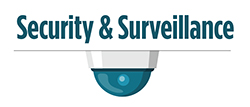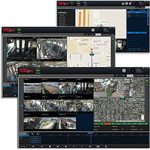Mobile video surveillance: more than just hardware
By Steven Winnefeld
 As technology development continues to progress, more transit agencies are closely evaluating their new choices in hardware. The more perceptive agencies have come to realize software has become just as important to their overall surveillance solution. An efficient and properly operating digital video recorder (DVR) sits safely tucked away in a buses’ radio closet or under a seat. Meanwhile this system generates video and data that must be reviewed and organized using software the agency may have to use every day. For this reason, it is critical that an agency’s surveillance system software be useful, intuitive and perfectly complement the hardware that records the video it plays and organizes.
As technology development continues to progress, more transit agencies are closely evaluating their new choices in hardware. The more perceptive agencies have come to realize software has become just as important to their overall surveillance solution. An efficient and properly operating digital video recorder (DVR) sits safely tucked away in a buses’ radio closet or under a seat. Meanwhile this system generates video and data that must be reviewed and organized using software the agency may have to use every day. For this reason, it is critical that an agency’s surveillance system software be useful, intuitive and perfectly complement the hardware that records the video it plays and organizes.
The number one criteria that a new system must be judged by is its ability to get video from the vehicle to the desktop. While events of interest may occur on the bus, it is on an agency’s desktop PC that the recorded video is reviewed. While previously it was necessary to walk out to the vehicle and retrieve the DVR’s storage media, new wireless central management systems (CMSs) have made video retrieval effortless. A bus pulls into a maintenance facility and the DVR, using a wireless bridge, automatically connects with a wireless access point on the agency’s network. Using Safety Vision’s SafetyNet CMS for example, the DVR can be configured to automatically download important video such as tagged events to the CMS database. Then, from the comfort of your desktop, without having valuable evidence pass through multiple physical hands, the video can be retrieved from the CMS database and reviewed. To complete this seamless transition, the DVR and software must work together in unison with a professionally analyzed, developed and installed wireless infrastructure.

Transit agencies face additional challenges above other vehicle fleets. Transit vehicles often operate at all hours of the day, with each vehicle having a different schedule. Organizing vehicle maintenance is a difficult and time-consuming task considering the fleet is seldom all in the same place for any reasonable amount of time. Software that is designed to accommodate the operations of an active transit fleet is critical. Safety Vision’s Observer Management System (OMS) PRO™ includes the ability to “push” DVR firmware updates and configuration files to DVRs automatically when the vehicles connect to the wireless network. Instead of personnel walking on each vehicle while it is parked, updating DVRs with flash drives or laptops, updates and changes can be coordinated and progress monitored from the desktop using the advanced CMS software.
Health management reporting is another critical feature for transit fleets provided by advanced CMS software such as SafetyNet and OMS PRO. As the DVRs connect to the CMS, valuable data is recorded, such as the DVR’s operational status, any kind of video loss due to camera failure, and the percentage of storage space both used and available. Monitoring this data physically is nearly impossible, considering the daily operations most transit vehicles endure. Health reports present all of this information in an easy-to-read format that can be customized for different departments or teams. While maintenance personnel will have a keen interest in camera failures, IT personnel will want to monitor storage space. Reports can be individualized to each person reading them and configured to display information to their preference.
While all important events need to be recorded, some critical events benefit from immediate review. Combined with cellular network, new video surveillance systems can provide the ability to review camera feeds in real time. Often called “live look-in,” this feature allows authorized users, including agency personnel, law enforcement and other first responders to see events on a bus as they are happening. Emergencies can be seen live and immediately accessed. Another benefit is realized as this feature can be used to monitor driver behavior. Poor habits can be observed and drivers can be coached on safer driving practices, reducing risk and promoting the agency’s image to the public.
All of these incredible new features emerging on the transit scene simplify complicated tasks for agency personnel, reduce risk, and promote a more efficient and effective security solution. But they are useless unless the users know how to use them. The software must be properly and effectively utilized; otherwise no return on investment will be realized. Start with software that is intuitive and easy to understand. Carefully review the documentation to fully understand all of the new bells and whistles that are available. To ensure the best understanding, enquire with your mobile surveillance provider about training lessons from the experts. Safety Vision can accommodate whole classes at its headquarters, or provide specialists to work with key personnel on-site. The utility of the software is truly maximized once it is completely understood and fully integrated with your agency’s existing infrastructure.
Steven Winnefeld is the documentation specialist for Safety Vision, LLC, a pioneer in mobile video surveillance systems. Safety Vision prides itself on its institutional knowledge. Visit Safety Vision at www.safetyvision.com. For a complete set of references please visit: http://bit.ly/1IwdQCu.
